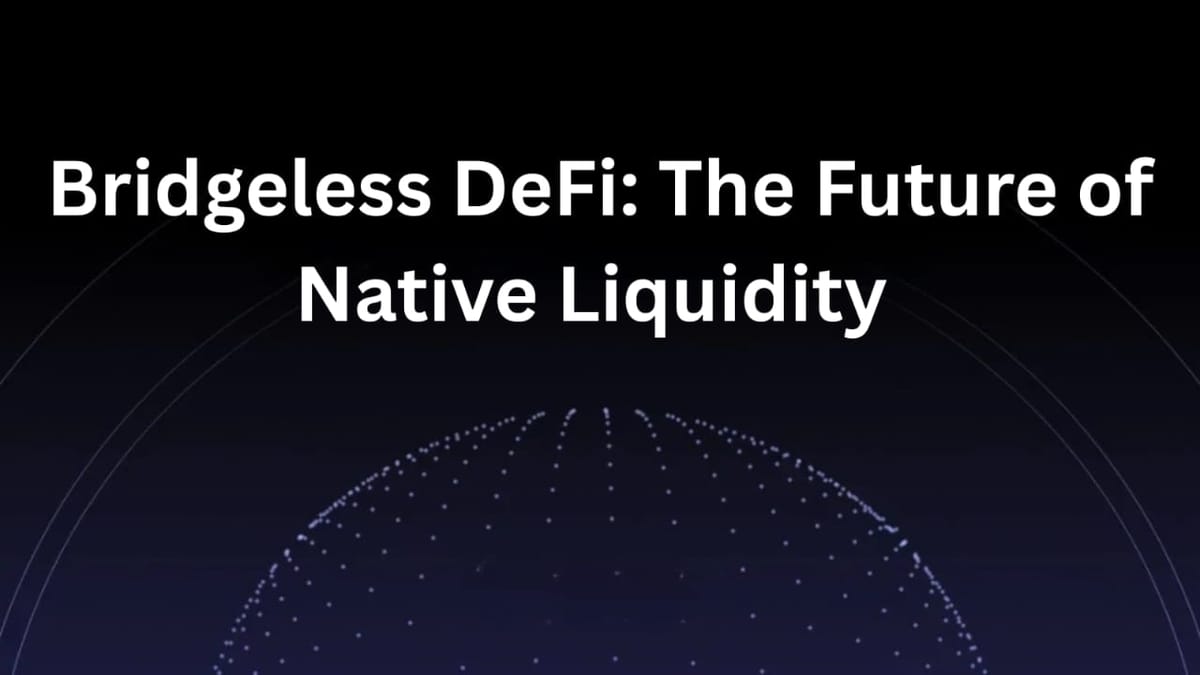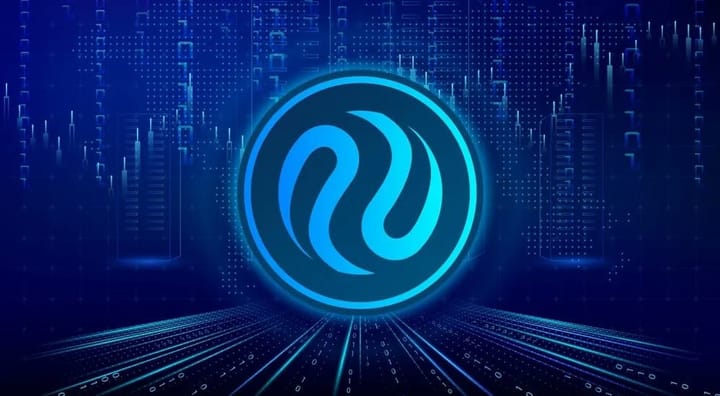Bridgeless DeFi: The Future of Native Liquidity

Introduction
The decentralized finance (DeFi) landscape has witnessed rapid growth and innovation over the past few years. As the ecosystem expands, the need for efficient and seamless asset transfers across different blockchain networks has become increasingly important. Traditionally, this has been achieved through the use of wrapped assets and cross-chain bridges, which allow users to move assets between different blockchains. However, these solutions often come with limitations, including security risks, high fees, and complexity. In response to these challenges, a new paradigm is emerging: Bridgeless DeFi. This article explores how protocols like Mitosis, LayerZero, and Interchain Accounts are eliminating the need for wrapped assets entirely, paving the way for a future of native liquidity.
1. Understanding Bridgeless DeFi
1.1 What is Bridgeless DeFi?
Bridgeless DeFi refers to a new approach to decentralized finance that enables seamless asset transfers and interactions across multiple blockchain networks without the need for wrapped assets or traditional cross-chain bridges. This innovative model leverages advanced protocols and technologies to facilitate native liquidity, allowing users to access and utilize their assets directly on different chains.
1.2 The Limitations of Traditional Cross-Chain Solutions
- Security Risks: Cross-chain bridges and wrapped assets often introduce security vulnerabilities. Users must trust the bridge's smart contracts, which can be exploited, leading to the loss of funds.
- Complexity: The process of wrapping assets and using bridges can be cumbersome for users, requiring multiple steps and interactions with different platforms.
- High Fees: Transferring assets across chains can incur significant transaction fees, especially during periods of high network congestion.
- Liquidity Fragmentation: Wrapped assets can lead to liquidity fragmentation, as users may hold different versions of the same asset on various chains, complicating trading and liquidity provision.
2. The Rise of Native Liquidity
2.1 What is Native Liquidity?
Native liquidity refers to the ability to access and utilize assets directly on their native blockchain without the need for wrapping or bridging. This model allows users to interact with their assets seamlessly across different protocols and platforms, enhancing the overall user experience and capital efficiency.
2.2 Benefits of Native Liquidity
- Enhanced Security: By eliminating the need for bridges and wrapped assets, native liquidity reduces the attack surface and enhances the security of user funds.
- Simplified User Experience: Users can interact with their assets directly on their native chains, streamlining the process and reducing complexity.
- Lower Fees: Native liquidity can lead to reduced transaction costs, as users avoid the fees associated with wrapping and bridging assets.
- Improved Liquidity: By allowing assets to remain native, liquidity can be aggregated more effectively, leading to deeper markets and better trading conditions.
3. Protocols Enabling Bridgeless DeFi
1. Mitosis
Overview
Mitosis is a protocol designed to facilitate native liquidity across multiple blockchain networks. By enabling seamless asset transfers and interactions, Mitosis eliminates the need for wrapped assets and traditional bridges.
Key Features
- Cross-Chain Asset Management: Mitosis allows users to manage their assets across different chains without the need for wrapping. This is achieved through a unified interface that connects various blockchain networks.
- Native Liquidity Pools: Mitosis enables the creation of liquidity pools that operate natively on each blockchain, allowing users to provide liquidity without the complexities of wrapped assets.
- Interoperability: The protocol is designed to be interoperable with existing DeFi applications, allowing users to access a wide range of services without the need for additional steps.
Use Cases
- Seamless Trading: Users can trade assets directly on their native chains, benefiting from lower fees and enhanced security.
- Liquidity Provision: Liquidity providers can contribute to native liquidity pools, earning rewards without the risks associated with wrapped assets.
2. LayerZero
Overview
LayerZero is a cross-chain communication protocol that enables seamless interactions between different blockchain networks. By providing a lightweight and efficient framework for cross-chain messaging, LayerZero eliminates the need for wrapped assets and traditional bridges.
Key Features
- Omnichain Interoperability: LayerZero allows smart contracts to communicate across different chains, enabling native asset transfers and interactions.
- Lightweight Architecture: The protocol is designed to be lightweight, minimizing the overhead associated with cross-chain communication.
- Security Model: LayerZero employs a unique security model that leverages oracles and relayers to ensure the integrity of cross-chain transactions.
Use Cases
- Cross-Chain DApps: Developers can build decentralized applications that operate seamlessly across multiple chains, enhancing user experience and accessibility.
- Native Asset Transfers: Users can transfer assets natively between chains without the need for wrapping, reducing complexity and fees.
3. Interchain Accounts
Overview
Interchain Accounts is a protocol that enables users to manage their accounts and assets across multiple blockchain networks. By providing a unified account interface, Interchain Accounts eliminates the need for wrapped assets and traditional bridges.
Key Features
- Unified Account Management: Users can manage their accounts and assets across different chains from a single interface, simplifying the user experience.
- Native Asset Interactions: Interchain Accounts allows users to interact with their assets natively on each chain, enhancing security and reducing fees.
- Interoperability: The protocol is designed to be compatible with existing DeFi applications, allowing users to access a wide range of services without additional steps.
Use Cases
- Simplified Asset Management: Users can manage their assets across multiple chains without the need for wrapping or bridging, streamlining the process.
- Enhanced Security: By eliminating the need for wrapped assets, Interchain Accounts reduces the risks associated with cross-chain transactions.
4. The Future of Bridgeless DeFi
Trends to Watch
- Increased Adoption of Native Liquidity Solutions: As users become more aware of the limitations of traditional cross-chain solutions, the demand for native liquidity solutions will grow.
- Interoperability Initiatives: Collaborative efforts among DeFi protocols to enhance interoperability will pave the way for more efficient native liquidity solutions.
- Regulatory Developments: As the DeFi landscape evolves, regulatory frameworks will need to adapt to address the challenges posed by native liquidity solutions.
- Community-Driven Innovations: The establishment of community-driven native liquidity solutions will likely reflect the needs and preferences of users, fostering greater participation in DeFi.
5. Challenges and Considerations
- Technical Complexity: Implementing native liquidity solutions requires significant technical expertise and resources. Developers must navigate various challenges to create efficient protocols.
- Security Risks: While native liquidity reduces some risks, it introduces new challenges related to cross-chain communication and interoperability. Ensuring the security of user funds and transactions is critical.
- Market Fragmentation: The proliferation of native liquidity solutions can lead to market fragmentation, making it challenging for users to navigate the landscape. Ongoing efforts are needed to streamline the user experience.
- User Education: As native liquidity solutions gain traction, educating users about the benefits and mechanics of these protocols will be essential to drive adoption.
Conclusion
Bridgeless DeFi represents a transformative approach to decentralized finance, enabling seamless asset transfers and interactions across multiple blockchain networks without the need for wrapped assets or traditional bridges. Protocols like Mitosis, LayerZero, and Interchain Accounts are at the forefront of this movement, providing innovative solutions that enhance security, simplify user experience, and improve liquidity. As the demand for native liquidity solutions continues to grow, we can expect to see significant advancements in the DeFi landscape, paving the way for a more interconnected and efficient financial ecosystem.



Comments ()